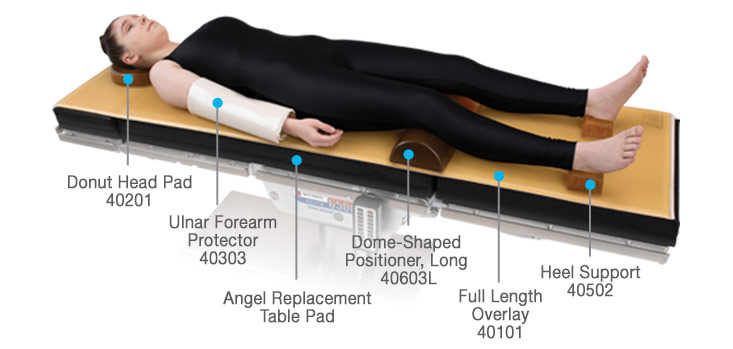
The National Pressure Ulcer Advisory Panel, European Pressure Ulcer Advisory Panel and Pan Pacific Pressure Injury Alliance reports that hospital-acquired pressure injury prevalence in acute care settings to be approximately 10%; their effects on both patients and hospitals is significant. In the previous blogs, we have discussed what can be done to mitigate risk in the preoperative and intraoperative phases of care. Today, we will discuss the importance of continued risk assessment and interventions in the postoperative phases of care.
In order to protect the patient from perioperative skin injuries, communication continues to be an important element as the patient transfers through the different phases of care. Once the surgery is complete and the intraoperative debriefing has taken place, the patient is transferred to the Post Anesthesia Care Unit (PACU). The OR nurse and the PACU nurse discuss the patient’s risk for skin injury based on blood loss, length of surgery and positioning. A dual skin assessment that focuses on the high-risk areas should be completed so that the team can identify any new skin injuries and discuss pressure injuries that were present at the time of admission through the preop phase of care. The communication and assessment between the OR and PACU are imperative so that when the patient reaches the inpatient floor, interventions to decrease pressure injuries can be implemented upon admission.
Pressure injury Interventions should continue in the PACU. These include offloading of the identified high-risk pressure areas (heals, sacrum, scapula etc.), keeping the patient warm, and maintaining their blood pressure to avoid hypotension and devascularization to the high-risk areas.
The final communication piece to the inpatient unit needs to take place when transferring the patient out of PACU to the inpatient unit. This communication, along with a final dual skin assessment with the bedside nurse, ensures improved patient outcomes.
Hospital acquired pressure injuries can be challenging to understand and prevention plans can be hard to implement in the perioperative setting because staff may not be aware of the poor outcomes (pressure injuries can take up to 72hrs to appear). One way to report the outcomes is to form a front-line perioperative pressure injury prevention team. This team should include front line nurses from all phases of surgical care. The goals of the team are to benchmark outcomes so that data can be disseminated to all teams involved in the care of the patient and to collaborate and standardize workflows to implement evidence-based pressure injury prevention strategies. In addition, buy-in from the front-line staff and support from leadership will help to create a successful perioperative pressure injury prevention program.
National Pressure Ulcer Advisory Panel, European Pressure Ulcer Advisory Panel, Pan Pacific Pressure
Injury Alliance. Prevention and Treatment of Pressure Ulcers: Clinical Practice Guideline. Emily Haesler, ed.
Osborne Park, Australia: Cambridge Media; 2014. http://www.internationalguideline.com Accessed June 3, 2019.

